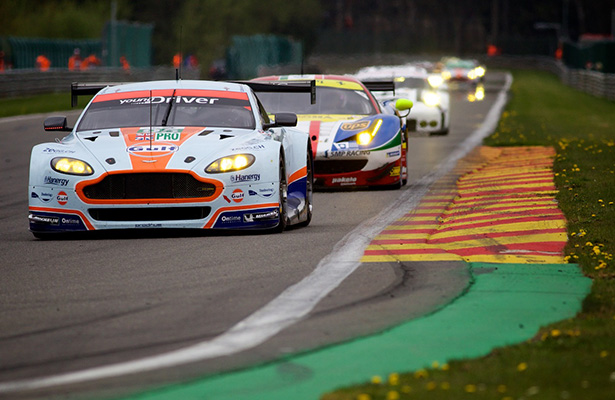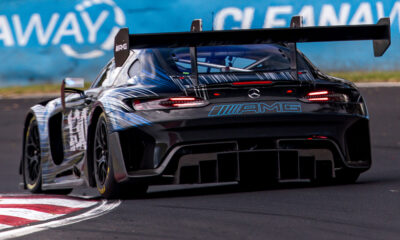
Photo: John Dagys
The ACO and FIA have finalized the 2016 GTE technical regulations, which will feature numerous performance and visual changes to the production-based class beginning next year.
Announced during Thursday’s annual ACO press conference, the class moves to a new standard of performance windows, allowing for an increase in power, reduction in weight and further styling freedoms.
Under the new regulations, the cars will roughly have a 20 horsepower increase and 15 kg weight reduction, roughly equating to a two-second per lap decrease in times at Le Mans.
Sonic air restrictors will continue to be used for normally aspirated engines, while there will be a more rigid control on turbos.
The chassis rules, meanwhile, have been carried over from the failed GT Convergence talks, which call for a tighter control of waivers.
While additional safety measures have been implemented, such as a driver escape hatch on the roof, the most visible change comes with more freedom on bodywork styling.
Each manufacturer will be allowed to modify aspects of the once strictly regulated production-based aerodynamics in order to fit into the newly defined performance window.
“The idea with the performance window is to bring the cars in the same performance behaviors,” ACO Sporting Director Vincent Beaumesnil told Sportscar365.
“Today when we balance different cars like an Aston Martin and Ferrari, these cars are so different that you need to give more power and downforce to [one car] in order to do the same lap time.
“Then if you have more power and more downforce, the car would be easier to drive for a second-level driver, so it would create some differences.
“Also when the weather changes and the temperature is different, having cars with different weights, power and aero means that [the performance] can change very quickly from one condition or track to another.
“We want to bring all of them in a very short range of power, weight and aerodynamics.
“All of the discussion on BoP will never end; I’m sure of that. But we’ll see that the car will be very equal in [most] circumstances.”
The relaxed bodywork rules could result in some cars adopting a more aggressive appearance, potentially similar to the old GT1 era, although Beaumesnil downplayed such a possibility.
“It’s not necessary to go too far [on aero] because they have to be in the performance window,” he said. “If they bring too much performance we’ll remove.”
Beaumesnil said all 2016-spec cars will be performance balanced at a BoP test at Ladaux in September, ahead of its expected debut at the 2016 Rolex 24 at Daytona.
Existing GTE cars will be grandfathered into the FIA World Endurance Championship for next year, with GTE-Am remaining open to only cars one year or older and old cars being completely phased out by 2018.
The European and Asian Le Mans Series will begin accepting new-spec machinery in 2017, while IMSA has yet to determine any potential grandfathering period for GTE cars competing in the TUDOR United SportsCar Championship.

























